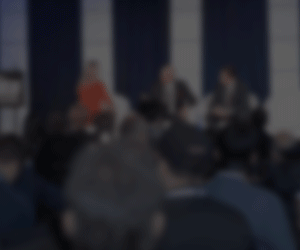Zinger Key Points
- Blockchain’s adoption faces regulatory and infrastructure challenges for integration in traditional finance systems.
- Uniform standards and regulatory clarity are essential for blockchain’s growth in financial institutions.
- Get Wall Street's Hottest Chart Every Morning
With blockchain adoption increasing among traditional financial institutions, integrating this technology into well-established systems brings both potential and obstacles.
Sandra Ro, CEO of the Global Blockchain Business Council (GBBC), recently spoke about these challenges, sharing her perspective on the foundational work necessary for blockchain's advancement in finance. Ro will expand on these topics at the upcoming Benzinga Future of Digital Assets event.
Connecting Blockchain with Existing Financial Systems
Ro noted that many financial firms are creating tokenized products, such as money market funds and bonds while working to bridge blockchain systems with traditional financial structures.
"Institutions… are leaning into developing tokenized products like money market funds, bonds, and repo," she stated. According to Ro, these projects aim to make blockchain technologies compatible with each other and with conventional infrastructure, creating a system where these tools can operate across multiple financial platforms.

Addressing Industry Standards and Infrastructure Needs
Ro highlighted that the need for uniform standards was a central theme at the recent SIBOS conference. Groups such as Swift, the Depository Trust & Clearing Corporation (DTCC), Deutsche Börse, and Euroclear are working to create frameworks to support blockchain development.
In Ro's view, a critical step for these systems to deliver on their promise is solving what she called "the digital cash leg" of tokenized transactions. Addressing this part of the system, she suggested, is essential for the technology to bring its full value to the financial industry.
The Role of Regulatory Clarity
Ro also pointed to regulatory uncertainty as a challenge in moving blockchain forward in finance. "Much work is in progress by industry to scale, but… regulatory uncertainty hinders scaling and innovation," she noted.
Ro highlighted ongoing initiatives, including the Digital Asset Market Subcommittee (DAMS) under GMAC, which aims to develop consistent definitions for digital assets. This work, she said, may help reduce regulatory confusion and provide a more straightforward path for future industry progress.
As blockchain continues to enter finance, Ro's comments reveal that achieving technical interoperability and regulatory clarity will be vital for the industry's future. The upcoming Benzinga Future of Digital Assets event will bring experts together to discuss these foundational topics further.
As the digital asset market continues to mature, the convergence of regulatory shifts, M&A activities, and adoption trends will define the future of this dynamic field. Benzinga's Future of Digital Assets event in New York City this November will provide industry leaders and investors with a platform to explore these developments further, offering insights into the evolving regulatory environment and the latest market dynamics.
Read Next:
Image: Mohamed Hassan from Pixabay
© 2025 Benzinga.com. Benzinga does not provide investment advice. All rights reserved.
Trade confidently with insights and alerts from analyst ratings, free reports and breaking news that affects the stocks you care about.